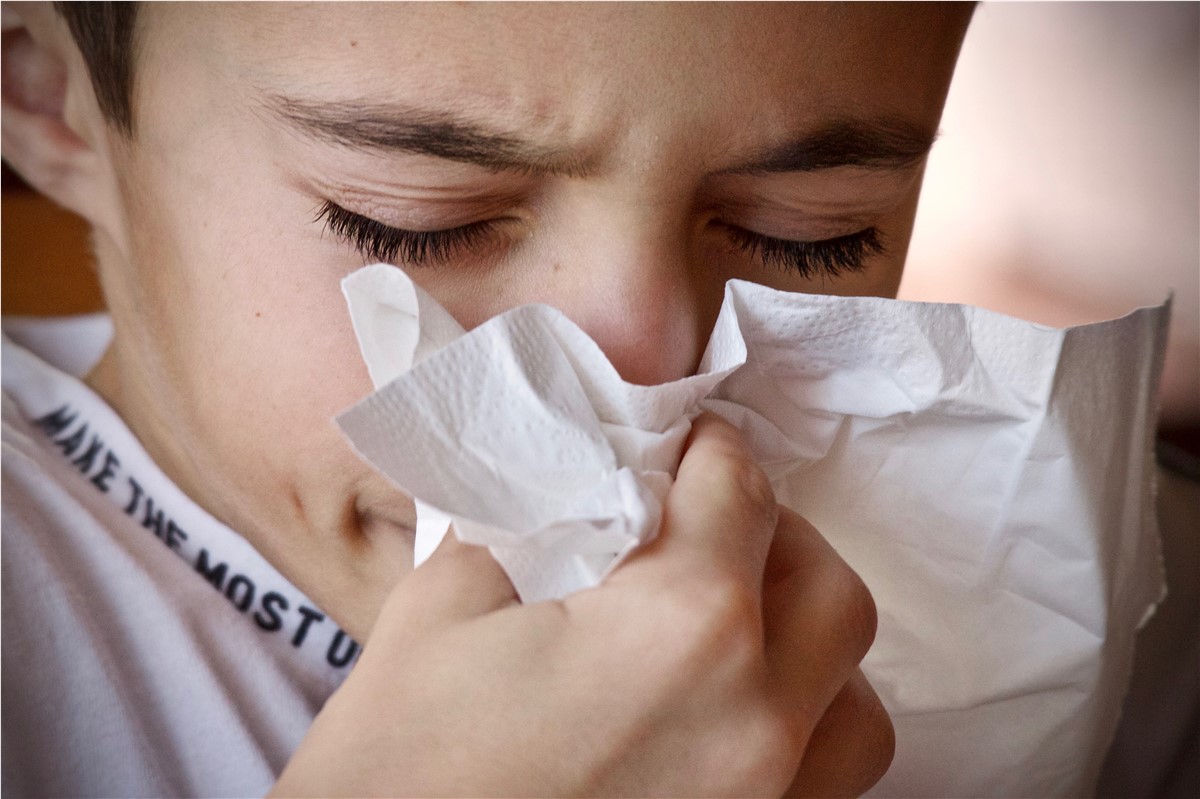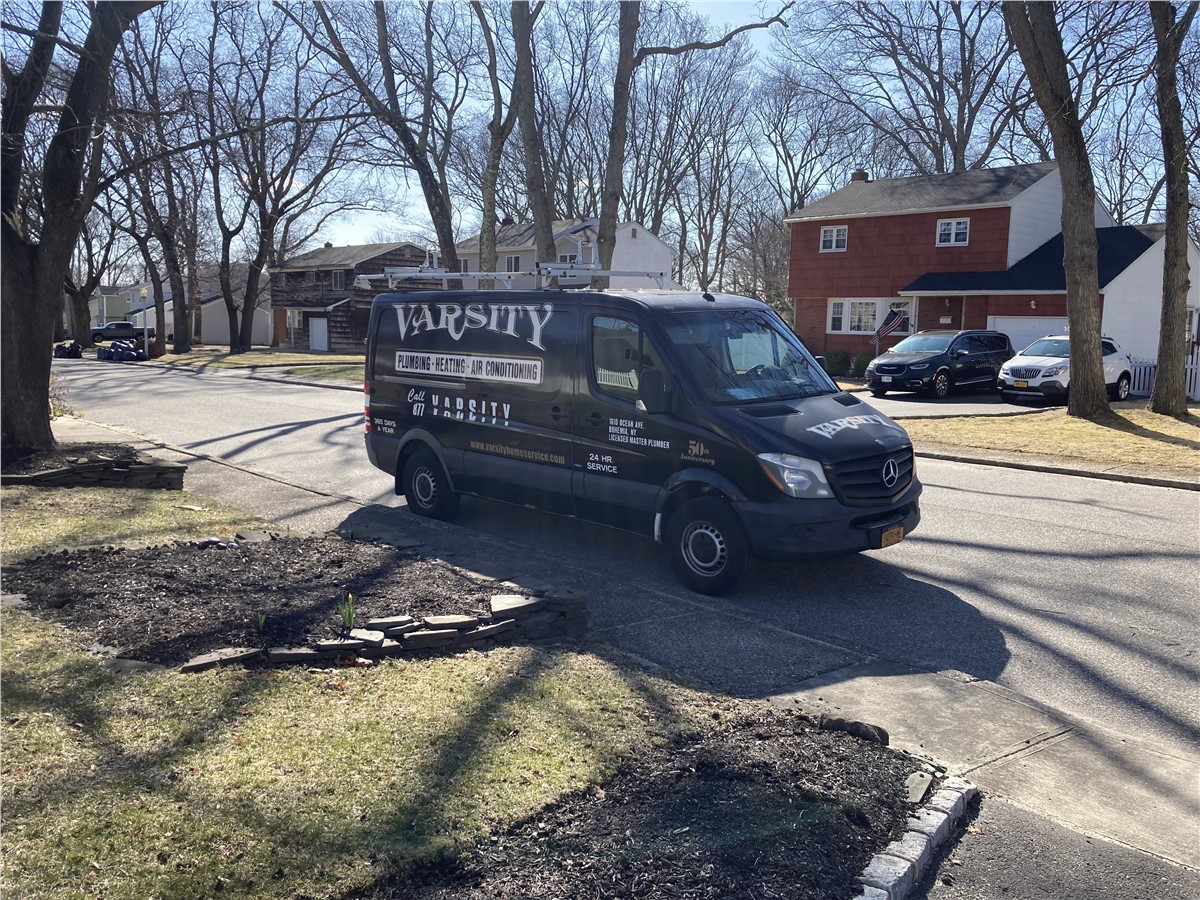
How to Allergy-Proof Your Home
Do you suffer from seasonal allergies? Are you surprised to find that allergy symptoms persist, even when you’re in your own home?
The good news is there are simple steps you can take to improve your indoor air quality and reduce unpleasant allergy symptoms.
Keep the Allergens Out
The best way to control allergens is to prevent them from getting into your home in the first place!
There are several strategies for minimizing the entry of allergens:
- Keep your windows closed, especially during allergy-prone seasons.
- Use doormats, door seals and draft-blockers – allergens can get in through the tiniest spaces.
- Remove shoes and outerwear at the door. Store them in a closet or closed cubby if possible.
- Store dirty clothes in closed laundry bins, preferably outside of your bedroom/main living spaces (such as a laundry room or basement).
- Brush/bathe pets regularly. Even if you are not allergic to pets, their fur harbors and transmits other allergens in your home.
- Wash off-season clothing before storing it for the next season. Use plastic bags or bins for storage to prevent dust mite colonization.
Minimize Allergen-Collectors
Fabrics are known to collect and trap allergens. You can reduce this impact by:
- Replacing carpets with hardwood/tile and washable area rugs.
- Switching from curtains/drapes to blinds or shades.
- Regularly vacuuming carpets, drapes, couches and mattresses with upholstery-safe vacuum attachments.
- Opting for a memory foam mattress.
- Using an allergy-proof cover on your mattress and pillows.
- Washing bedding and blankets weekly.
Make Minimalist Decorating Choices
Did you know decorating choices can have an impact on the allergens in your home? You can help reduce allergen accumulation by:
- Excluding decorative pillows.
- Opting for furniture with smooth surfaces and materials that can easily wipe clean.
- Avoiding upholstery and fabric furniture.
- Opting for storage in drawers/closets rather than open shelves/racks.
- Minimizing clutter and decorations that easily collect dust (such as books, magazines, knickknacks, ornaments, etc.)
- Storing children’s toys in closed bins.
Eliminate Smoke
Smoke can exacerbate allergy symptoms and respiratory issues. Avoid this by:
- Not smoking inside your home.
- Opting for a gas fireplace over wood-burning.
Set a Cleaning Schedule
Cleaning frequently is vital for reducing allergens, but it’s also important to consider how you’re cleaning and the cleaning tools you use:
- Vacuum often, moving furniture out of the way whenever possible. Opt for a vacuum cleaner with a HEPA filter to capture the smallest particles.
- Don’t forget to vacuum underneath beds regularly.
- Don’t overlook cleaning the often-forgotten items like lampshades, baseboards, ceiling fans, and light fixtures.
- Use a damp cloth to clean surfaces where allergens can accumulate, including countertops, shelving, the tops of doors, windowsills and window frames.
- If you have allergies, wear a dust mask and/or enlist the help of others for cleaning.
Choose HEPA Filters for Your Home’s Air System
HEPA filters can make a world of difference in the comfort of family members with allergies. HEPA filters, or High Efficiency Particulate Air filters, are designed to trap the smallest particles. HEPA filters can remove at least 99.97% of dust, pollen, mold, bacteria, and any other airborne particles with a size of 0.3 microns. This makes them extremely useful tools for allergy management.
It’s also important to change your air system’s filters often. In general, heating and cooling system filters should be changed at least every three months – but in homes with allergy-sufferers, it is recommended to change the filters as often as monthly.
Maintain Ideal Humidity Levels
Having high humidity levels in your home leads to a greater risk of mold growth. Mold growth is not only a dangerous health risk on its own but can also increase the severity and frequency of allergy symptoms.
You can manage humidity levels within your home by:
- Adding a dehumidifier to your central air system.
- Installing a vented exhaust fan on your stove.
- Installing an exhaust fan in bathrooms.
- Wiping away the extra moisture left on surfaces of showers and bathtubs after usage.
- Keeping bathroom doors closed when showering.
Know Your Indoor Air Quality Options
Allergen, dust and mold accumulation in your home can lead to respiratory issues and exacerbate allergy symptoms. Air purifiers remove these contaminants - as well as airborne bacteria and viruses - from the air, allowing for improved breathing and overall health. But how do you know what type of air purifier is right for you?
There are two main types of air cleaners:
Portable Air Purifiers
Portable air purifiers are often compact and transportable. They are designed to filter the air in a single room or area, and in most cases they do not require professional installation. Portable air cleaners can range in price significantly based on their capacity and on the variety of different features offered at different price levels. Keep in mind that with most portable air purifiers, you will also need to factor in the cost of replacement filters over time. To avoid surprise expenses and get a better sense of what a portable air filter will cost you over its lifecycle, it is important to look at the parts and manufacturer’s recommended replacement schedule. Some portable air purifiers use only one filter, while others utilize multiple filters and even screens or pre-filters.
While convenient, portable air purifiers can be noisy in operation, they require a nearby power source for operation, and they take up floor space. When considering a portable air purifier, it’s also critical to measure the space you intend to use it in order to determine the square footage needs of your space. An air purifier that is too small for the intended use will not effectively sanitize the air. Similarly, if you have an open-concept home layout, a portable air filter may not have the proper coverage range due to the expansive airflow.
Whole Home Air Purifiers
While portable air purifiers are designed to filter air in a single room, whole-home air purifiers are designed to filter air throughout your entire home. Whole-home air purifiers work within your heating and/or cooling system to sanitize the air as it circulates through your home. For this reason, whole-home air cleaners are less obtrusive and much more comprehensive compared to portable air cleaners.
We often find that homeowners are surprised to discover that whole-home air purifiers can cost you less than portable air purifiers. Depending on your capacity needs and intended use, whole-home air purifiers can be more efficient and cost effective than portable air purifiers for the same coverage area.
Whole-home air cleaners also have an added benefit: they can help improve the efficiency of your heating and air conditioning system. Whole-home purifiers clear out the air in a significant way, which helps your HVAC system pump that air throughout your home with less effort. Maximizing the efficiency of your central air system can reduce your energy bills and extend the lifespan of your equipment.
Your Home’s Air Purification Needs
Whether you choose a portable air purifier or a whole-home air purifier, it’s important to consider the type of technology and technique the air purifier uses to ensure it meets your needs. In other words, what types of contaminants are you interested in targeting in your home?
For example, if you are most concerned with inactivating viruses, UV lights are a great option. If you’re concerned about chemical fumes, gases or odors, you may consider carbon filters because they are effective in trapping gases that would otherwise go through other filter media. If your top priority is allergy defense, an ionizer or air scrubber may be a great fit for your home, as these devices are designed to neutralize tiny particles. Etc.
Varsity Home Service offers a variety of whole-home air purification devices that can quickly and easily be installed within your existing heating and/or cooling system by an indoor air quality professional. Some of our most popular whole-home air purifier options include:
UV Lamps
UV light has been scientifically proven to be highly effective at killing bacteria and viruses by destroying the molecular bonds that hold their DNA together and making the organism unable to replicate. Ultraviolet lamps can be used within your HVAC system to neutralize airborne viruses, mold, bacteria, and flu as they circulate through your home’s ductwork. Each molecule of air will pass over the lamp several times a day - which helps keep your indoor air consistently sanitized. UV lamps are also one of the most compatible types of indoor air quality products to install within an existing HVAC system because they are available in many different sizes. UV lamps can be installed in central air systems as well as ductless mini split systems.
While UV lamps may be helpful in improving respiratory conditions due to their effectiveness in neutralizing mold, bacteria and viruses in the home, they are not the most effective option for removing other types of allergens like pollen or pet dander from the air. Additionally, UV bulbs need to be replaced regularly (about once every year or every few years, depending on system usage). If your primary air purification goal is to reduce allergy symptoms, we would recommend another type of air sanitization technology (read on below).
Media Air Cleaners
A media air cleaner is a metal cabinet housing a media filter that is installed in the return air duct of your HVAC system. As air passes through your central heating and/or air conditioning system, the media air cleaner traps airborne particles to prevent them from entering your living spaces. Media air cleaners are a helpful option for allergy-sufferers because they improve your home’s indoor air quality by trapping tiny, invisible air pollutant particles including dander, pollen, mold and dust.
Media air cleaners integrate easily with central cooling and/or heating systems, but keep in mind they are not a maintenance-free option. Since these devices trap particles inside, the filters in media air cleaners need to be changed regularly.
Ionizers
Ionizers are indoor air quality devices that remove particles from the air to purify it. These devices use negative ions to help tiny airborne particles collect and settle out of the air so they can no longer circulate through your home.
Air ionizers can offer many benefits, including the ability to:
- Freshen the air by neutralizing airborne contaminants and allergens
- Inactivate viruses in the air
- Stop the growth of viruses, bacteria and mold
- Reduce odors and certain VOCs
- Reduce static electricity in the home
- Reduce sunbeams and floating dust particles in the home
- Keep the HVAC system coil cleaner
Ionizers can be helpful for homes with allergy-sufferers because they do not simply trap airborne particles, but rather facilitate their removal from the airflow. Ionizers can be installed in central air systems as well as ductless mini split systems. Unlike media air cleaners, ionizers do not have filters that need to be changed regularly, making them a low-maintenance option.
Air Scrubbers
Air Scrubbers utilize ActivePure, a photocatalysis technology that works by propelling molecules into the air which inactivate microscopic airborne and surface contaminants by destroying the living environment of these harmful particles. Unlike other air purification technologies, Air Scrubbers do not take a passive approach in requiring the contaminants to be pulled into the device to treat them; instead, Air Scrubbers seek out and neutralize contaminants proactively. This type of technology is used in hospitals around the world.
Air Scrubbers attach directly to the ductwork of your central heating and/or cooling system to reduce allergens, viruses, bacteria and other small particles in the ambient air AND on surfaces. These devices are an excellent solution for allergy-sufferers because they provide 24/7 surface decontamination and whole-home air purification. Air Scrubbers have been proven to reduce up to 99.9% of many common airborne and surface contaminants.
Air Scrubbers also protect your heating and cooling system from potential buildup that can reduce the efficiency of your HVAC system. Additionally, Air Scrubbers are a maintenance-free option, as they do not have filters that need to be changed regularly.
Consult a Professional
By making some simple changes that will reduce the allergens in your home, you can create an environment with cleaner and safer air for your family to breathe. You can even make your home more comfortable through the relief of unpleasant allergy symptoms.
For air purification recommendations, call Varsity Home Service to set up a free consultation with an indoor air quality professional.
Tags
Subscribe to Varsity Home Service's Blog







